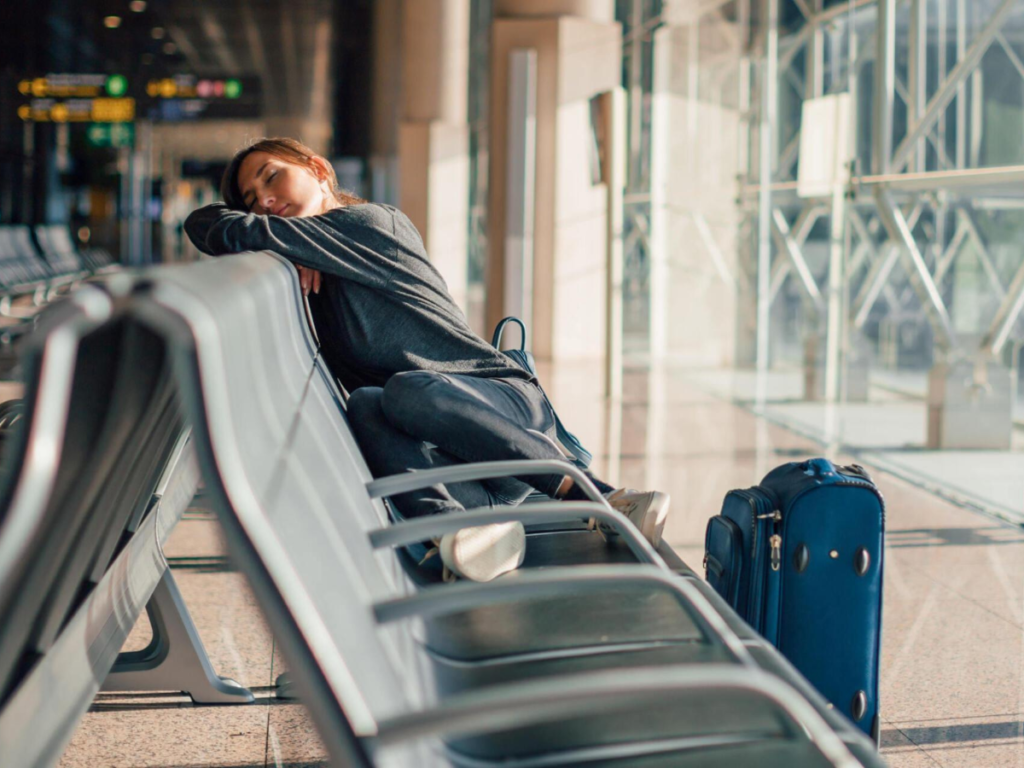Embarking on global adventures is exhilarating, but the aftermath of lengthy flights can be grueling. Jet lag, that unwelcome blend of weariness, insomnia, and disorientation, often leaves travelers feeling sluggish and discombobulated. However, fret not, intrepid wanderer! By adopting a few proactive steps and clever tactics, you can mitigate the impact of jet lag and arrive at your destination ready to explore.

Jet lag arises when your internal body clock, regulated by the sleep-wake cycle, gets thrown off balance by crossing multiple time zones. This disruption throws your natural rhythms for melatonin production, temperature regulation, and digestion into disarray, leading to fatigue, insomnia, headaches, and other unpleasant symptoms.
Planning for Victory:
Preparation is key! Before embarking on your journey:
- Adjust your sleep schedule: Gradually shift your sleep-wake cycle towards your destination’s time zone in the days leading up to your flight. Aim for an hour adjustment per day.

- Hydrate, hydrate, hydrate: Proper hydration combats dehydration, a common contributor to jet lag symptoms. Drink plenty of water before, during, and after your flight.

- Pack wisely: Bring essential sleep tools like an eye mask, earplugs, and comfortable clothes for long journeys.
Battling the Clock in Flight:
Minimize in-flight disruptions to your internal clock:
- Minimize caffeine and alcohol: While tempting, they disrupt sleep patterns. Opt for water and herbal teas.

- Adjust cabin lighting: Dimming the lights in your seat several hours before your desired bedtime signalizes to your body that it’s time to wind down.
- Move around: Don’t be a seat potato! Regularly stretch and walk around the cabin to improve circulation and combat stiffness.
- Strategize sleep: Aim for sleep during your new nighttime, even if it’s just a nap. Use earplugs, eye masks, and relaxation techniques to improve sleep quality.
Landing and Beyond:
Embrace strategies for a smooth adaptation:
- Expose yourself to sunlight: Seek natural light upon arrival, especially in the morning. This helps regulate your internal clock.
- Stay hydrated: Continue drinking plenty of water to combat dehydration and adjust to the new environment.
- Maintain your new sleep schedule: Avoid napping excessively during the day, even if you’re exhausted. Stick to your new bedtime routine.
- Eat local: Adapt to local mealtimes and avoid heavy meals close to bedtime. Opt for light, healthy options.
- Exercise lightly: Physical activity helps adjust your body clock and promotes sleep. Engage in gentle activities like walking or yoga.

- Relax and be patient: Remember, complete adjustment takes time. Be gentle with yourself and allow your body to adapt.
Advanced Tactics for Seasoned Travelers:
- Melatonin: Consult your doctor about using melatonin supplements to help regulate your sleep-wake cycle upon arrival.
- Light therapy: Portable light therapy devices that mimic natural sunlight can help reset your internal clock.
- Compression socks: These can improve circulation and reduce leg discomfort during long flights.
Remember:
- Individualize your approach: Your response to jet lag is unique. Experiment and find what works best for you.
- Consult your doctor: If you have any pre-existing health conditions or concerns, consult your doctor before undertaking long-distance travel or using specific jet lag remedies.
Embrace the adventure:
With proper planning and strategic self-care, you can minimize the impact of jet lag and arrive at your destination feeling refreshed and ready to explore. So, pack your bags, conquer the time zones, and enjoy the joy of traveling without letting jet lag steal your wanderlust!











